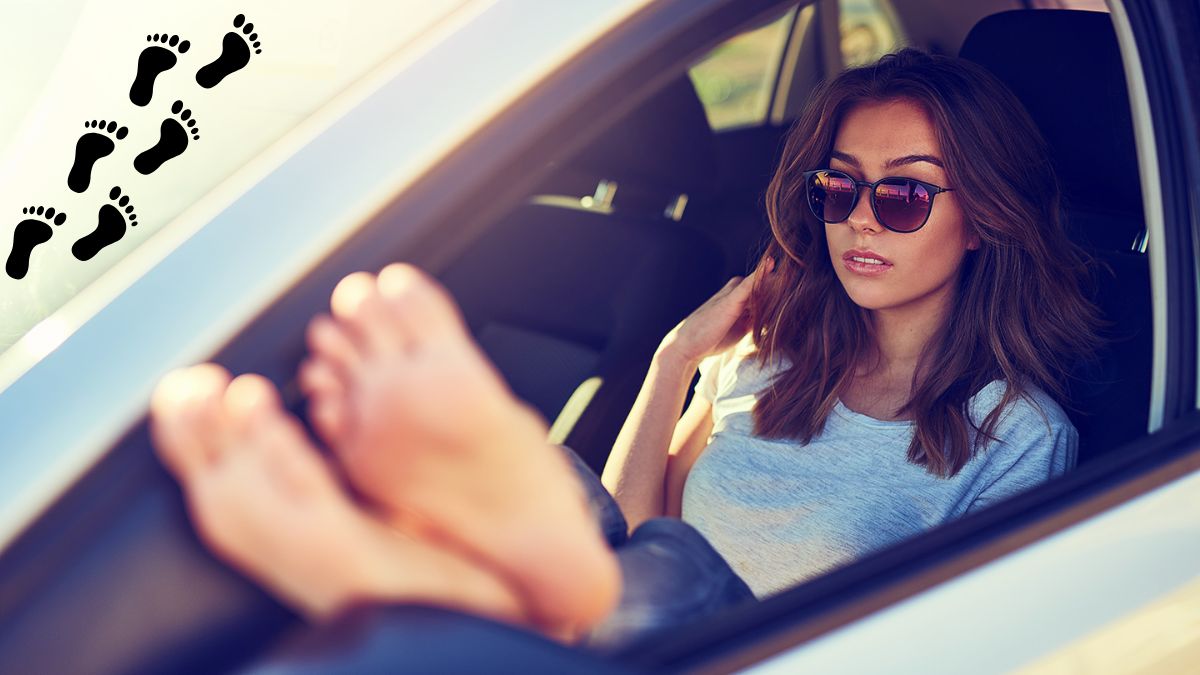Driving barefoot often sparks curiosity and debate. Many drivers wonder if it’s legal to operate a vehicle without shoes, especially in states like California. This comprehensive guide will explore the legality of driving barefoot in California, compare it with other U.S. states, and provide insights into related traffic laws and safety considerations.
Driving barefoot is a topic that often comes up in casual conversations about road safety and legal regulations. For many, the idea of operating a vehicle without shoes might seem unconventional or even risky. However, the legality of driving barefoot varies from state to state in the United States. Understanding these regulations is crucial for drivers to ensure they are compliant with local laws and to promote safe driving practices.
This article will delve into the specific laws related to driving barefoot in California, compare them with regulations in other states, and explore the safety implications of driving without footwear.
California Traffic Laws
Specific Laws Regarding Driving Barefoot
In California, there is no specific law that outright prohibits driving barefoot. The California Vehicle Code does not mention footwear requirements for drivers. Therefore, driving barefoot is generally legal in California. However, it is essential to understand that while the act of driving barefoot itself is not illegal, it must not affect the driver’s ability to operate the vehicle safely.
Safety Concerns and Legal Perspectives
California law emphasizes safe driving practices and requires that drivers maintain control of their vehicles at all times. If driving barefoot compromises a driver’s control or ability to operate the vehicle safely, it could potentially lead to legal consequences. For instance, if an accident occurs and it is determined that driving barefoot contributed to the incident, the driver might face charges related to unsafe driving practices or negligence.
In a legal context, driving barefoot could be scrutinized if it is linked to a traffic violation or accident. The key point is that while barefoot driving is not explicitly banned, it must not impair the driver’s control over the vehicle.
Comparison with Other U.S. States
Laws and Regulations in Selected States
While California permits driving barefoot, other states have different approaches:
- New York: Similar to California, New York does not have a specific law against driving barefoot. However, if driving barefoot is deemed to hinder control of the vehicle, it could lead to charges of unsafe driving.
- Florida: Florida does not ban driving barefoot. Nonetheless, drivers must ensure that their footwear—or lack thereof—does not interfere with the safe operation of their vehicle.
- Texas: Texas law does not prohibit driving barefoot. As with other states, the primary concern is whether driving barefoot affects the driver’s ability to operate the vehicle safely.
- California: Unique in its broad approach, California does not restrict driving barefoot, provided it does not impact driving safety.
Regional Variations and Common Misconceptions
Across the United States, the legality of driving barefoot generally falls into a gray area. Most states do not have explicit laws banning barefoot driving, focusing instead on whether the driver’s actions impact vehicle control and safety. Common misconceptions include the belief that certain states have blanket prohibitions against barefoot driving, which is often not the case.
Safety Considerations
Potential Risks of Driving Barefoot
Driving barefoot can present several risks:
- Lack of Traction: Bare feet can be less effective at gripping the pedals compared to shoes, especially in wet or slippery conditions. This lack of traction can impair the driver’s ability to operate the vehicle smoothly.
- Pedal Feel: Without shoes, drivers might find it challenging to gauge the pressure they are applying to the pedals, which can lead to over- or under-application of force.
- Injury Risk: If an accident occurs, bare feet are more susceptible to injury from broken glass or other debris.
Recommendations from Experts
Experts recommend that drivers wear appropriate footwear to ensure maximum control and safety while driving. Shoes provide a better grip on the pedals, reduce the risk of foot injury in the event of an accident, and can help prevent fatigue during long drives. While driving barefoot is not illegal, it is generally advised to use shoes designed for driving to avoid potential hazards.
Driving Practices and Best Practices
Alternatives to Driving Barefoot
For those who prefer not to drive barefoot, there are several alternatives:
- Driving Shoes: Specialized driving shoes offer excellent pedal grip and comfort, making them a popular choice among enthusiasts.
- Comfortable Footwear: Sneakers or other comfortable, supportive shoes can provide a good balance of comfort and control.
- In-Car Footwear: Some drivers keep an extra pair of shoes or sandals in their vehicle for situations where they might prefer or need to drive with footwear.
Tips for Safe Driving
Regardless of footwear, the following tips can enhance safety:
- Ensure Proper Fit: Choose shoes that fit well and do not interfere with your ability to operate the pedals comfortably.
- Adjust Pedal Pressure: Be mindful of how much pressure you apply to the pedals, and make adjustments based on your footwear.
- Maintain Focus: Stay focused on the road and avoid distractions that could compromise your driving abilities.
Conclusion
Driving barefoot in California is generally legal, as long as it does not impact the driver’s ability to operate the vehicle safely. While there are no specific laws prohibiting barefoot driving, drivers must ensure that their lack of footwear does not compromise vehicle control or contribute to unsafe driving conditions.
Comparatively, most states in the U.S. follow a similar approach, emphasizing safe driving practices over specific regulations about footwear. The primary concern is whether the driving practice affects safety and control.
Ultimately, while driving barefoot is permissible, it is advisable to use appropriate footwear to enhance driving safety and comfort. Understanding and adhering to safe driving practices ensures that all drivers contribute to a safer road environment.
For more information on traffic laws and safety recommendations, drivers are encouraged to consult their local DMV or legal experts.
This Article Includes







